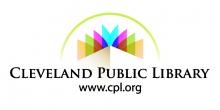The AFRICAN AMERICAN MUSEUM, formerly the Afro-American Cultural & Historical Society Museum (est. 15 April 1953, inc. 21 December 1960), is the first independent nonprofit African American museum established in the U.S. It serves as a center for exhibits and classes on Black History and as a community center for Greater Cleveland. ICABOD FLEWELLEN founded the museum and served as curator until the mid-1980s; his vision was influenced by Jamaican-born journalist-historian J. A. Rogers, who traced the world’s great men of African ancestry to challenge notions of racial inferiority and promote harmonious race relations. After listening to his father, a railroad brakeman, describe African American inventors' contributions to railroads, Flewellen at age 13 began gathering newspaper clippings and artifacts, but an arson fire destroyed most of his collection. In 1949, he moved to Cleveland with the surviving materials in a footlocker, and by 1953 had opened a museum at his 8716 Harkness Rd. home. In 1968, Flewellen relocated a portion of his large collection to a classroom in the former St. Marian’s Catholic School at 2212 Petrarca Rd. The new site’s first program featured Cleveland Mayor CARL STOKES pondering “Negro or Black?” and the museum mounted exhibits on black doctors, models and aviators along with twice monthly history classes. Seeking a larger facility, Flewellen purchased the Bell Goodrich Building at 1839 E. 81st St.; by 1975, the collection was estimated at over 200,000 items. For the Bicentennial he mounted an exhibit on Black History from 1512 to 1976. However, the building’s deteriorated condition caused closures and strained the museum’s limited resources. Finally, in February 1983 the society moved to the CLEVELAND PUBLIC LIBRARY’s decommissioned Treasure House building at 1765 Crawford Road in HOUGH. In Sept. 1984, CPL turned over the facility, which three years later was named for Flewellen. While a better museum site, the building also had structural problems estimated at $630,000 for repairs.
By 1984-85, a rift between founder and museum board over managerial and financial concerns forced Flewellen out. Until his departure Flewellen supported the museum with funds from his work as a Veteran's Hospital messenger and later as a CASE WESTERN RESERVE UNIVERSITY maintenance worker. Having no endowment, the museum relies on community donations; membership and admission fees; school tours; occasional grants from government entities like the National and Ohio Endowment for the Humanities, the CLEVELAND FOUNDATION and GEORGE GUND FOUNDATION among others; volunteers’ in-kind work; and support from black churches. In February 1987, the society officially changed its name to the African American Museum. By 1991, the museum reported 1,700 members; admissions produced about one-third of its yearly income. The museum’s board granted Flewellen emeritus status in 1995; soon afterward, a committee of African American scholars decided on permanent exhibits reflecting Flewellen’s interests and the collection’s strengths: Africa Past and Present, Civil Rights Movements in America, Black Life in Cleveland, Black Scientists and Inventors, and Achievements in Sports and Art as well as on the Afro-Russian poet Alexander Pushkin. From the mid-1980s to 2004 under the directorships of Dr. Eleanor Engram, Dr. Joan Baker, Joyce Jones, Linda Cross, and Nancy Nolan-Jones, the museum featured traveling exhibits and new programing that spoke to broader community concerns. The former included Smithsonian exhibits on the Great Migration and on Quilts in African American Folk Life. New programs included weekly forums on personal finance, time management, legal rights, nutrition and social issues, as well as recitals, African cultural workshops and annual community celebrations of Juneteenth, Kwanzaa, and the Rev. Dr. Martin Luther King, Jr.’s birthday. In 2000, in collaboration with NASA GLENN RESEARCH CENTER, the museum mounted an exhibit on NASA’s program to bring solar electricity to rural African villages.
Ongoing maintenance problems and limited funds continued to produce periodic closures including a major one from 2004 to 2010. Safety concerns led to the removal of some artifacts including inventor GARRETT MORGAN’s gas mask and traffic light. On February 28, 2009, Frances Caldwell took over as executive director. With a new board, she re-opened the museum in 2010 on a part-time basis in the summer for group tours and individuals; Caldwell noted that the museum’s focus was to “educate young people about the positive contributions of blacks to the cultures of the world, and to eliminate the distorted portrayals and images of black people.” Besides African dance classes and regular programming for seniors and teens, the museum reinstituted its annual Kwanzaa celebration and added bus trips to the Detroit African World Festival. The museum continued community-based programs: holistic health, fashion shows, cookouts, poetry slams, and jazz concerts as well as a summer tutoring program. However, the building’s structural problems persisted; in April 2016, Caldwell announced the museum was closed due to the “dire need for repairs.” In 2017, the museum received a state grant for repairs and raised additional funds. By February 2019, the society completed key renovations including ADA access, a new roof and HVAC system; they also received a $5,000 Cuyahoga Arts and Culture grant for programming. The society plans additional renovations before a projected “reopening” ceremony in June 2019. In the meantime exhibits remain boxed on site to be redisplayed at that time. The society also plans a name change to the African American Museum of Cleveland to distinguish it from similar institutions that have followed in its wake.
Updated by James Borchert
See also LIBRARIES, ARCHIVES & HISTORICAL SOCIETIES.
View image in Digital Cleveland Starts Here®
View more at Cleveland Historical
View image at Cleveland Public Library




